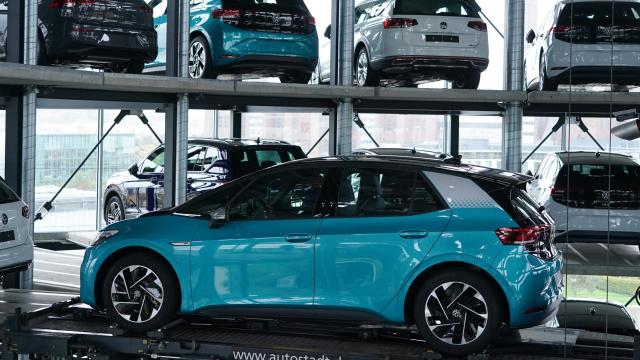Volkswagen CEO Herbert Diess made his first tweet earlier today in an apparent effort to start some beef with Elon Musk. The reality, though, is that VW’s $US50 ($65) billion electric push hasn’t gone so swell.
Here is the tweet. I apologise for showing it to you.
Hello @Twitter! I’m here to make an impact with @VWGroup, especially on political issues. And, of course, to get some of your market shares, @elonmusk – after all, our ID.3 and e-tron have won the first markets in Europe. Looking forward to productive discussions!
— Herbert Diess (@Herbert_Diess) January 20, 2021
The timing of the tweet was weird because at 10:31 a.m. many people in the United States — and I have to assume a fair number of people across the world — had their eyes on Washington, and the transfer of power happening there. Most people at that moment in history were not thinking about Volkswagen or its electric car situation.
The timing of Diess’s first tweet was also not weird in that Tuesday the Wall Street Journal did a deep dive on how Volkswagen’s electric push was going. We already knew that it had been bungled. It would not at all be weird for a CEO to tweet to attempt to deflect attention from a story.
Here is one telling anecdote:
In April, [Diess] brought back [Fredmund Malik, an Austrian economist] for a three-day workshop with about 40 of his top executives. Prof. Malik said Mr. Diess posed a simple question for the group: What do we have to do to catch up with Tesla by 2024?
The CEO opened the gathering with a blistering critique of VW’s progress. He showed a slide comparing the ID.3 to the Tesla Model 3, pointing out that while VW’s car excelled in old-world features such as spaciousness and design, Tesla beat VW hands down on such metrics as battery range and advanced computing.
At the end of the workshop, the management team had the outlines of a reboot. It would produce a new fully electric and largely self-driving car by 2025, shift more resources from the company’s old business to EVs and digitization, expand battery manufacturing, and explore new revenue streams and payment systems.
As the summer 2020 launch date for the ID.3 approached, VW told Continental to focus on critical functions. By then, Mr. Ulbrich and senior VW executives concluded that the ID.3’s remote updates weren’t yet secure enough to go on the road, Mr. Ulbrich said. The updates not only changed apps and kept the navigation up-to-date, they also made changes to core functions such as the electric powertrain.
“In mid-2020 we had to make the decision that we would have to ask the first 50,000 vehicles to come to the service stations for an update,” Mr. Ulbrich said. “Updating the vehicle’s core software is a complex process and we have to make sure at any time that our vehicles are safe.”
VW didn’t make Mr. Senger available for comment.
Karsten Michels, the senior Continental engineer working on the project, said the main problem was the teams simply ran out of time. “Maybe we underestimated how much work is involved and how little we could actually rely on existing legacy software,” Mr. Michels said in an interview.
A big part of the issue, according to the WSJ’s report, is that software plays an essential function in EVs, and automakers simply don’t have the coding experience, in the same way that I remain very sceptical of Apple developing a car, because Apple simply doesn’t have the automaking experience.
It’s not hard to see Volkswagen righting the ship — and it has the resources to do so — but the best timeline for how long it will take legacy automakers to make a car competitive with the Model 3 still seems like roughly how long it took Tesla to make the Model 3 itself, or about a decade, give or take a few years. So, yeah, having VW produce a true competitor around 2025 sounds about right.
